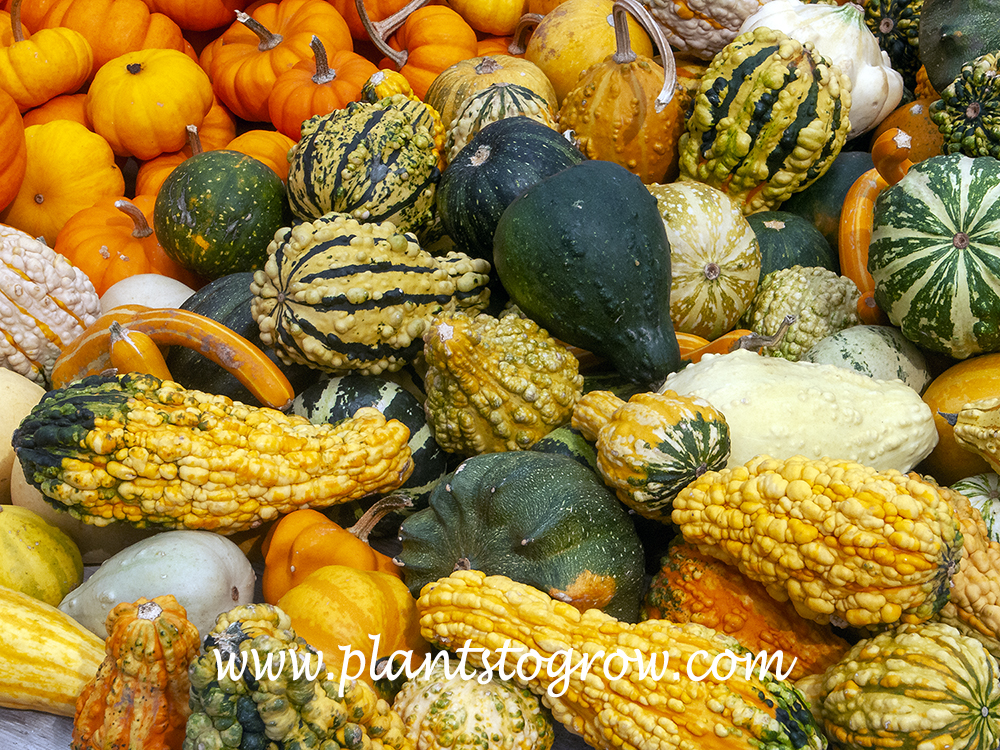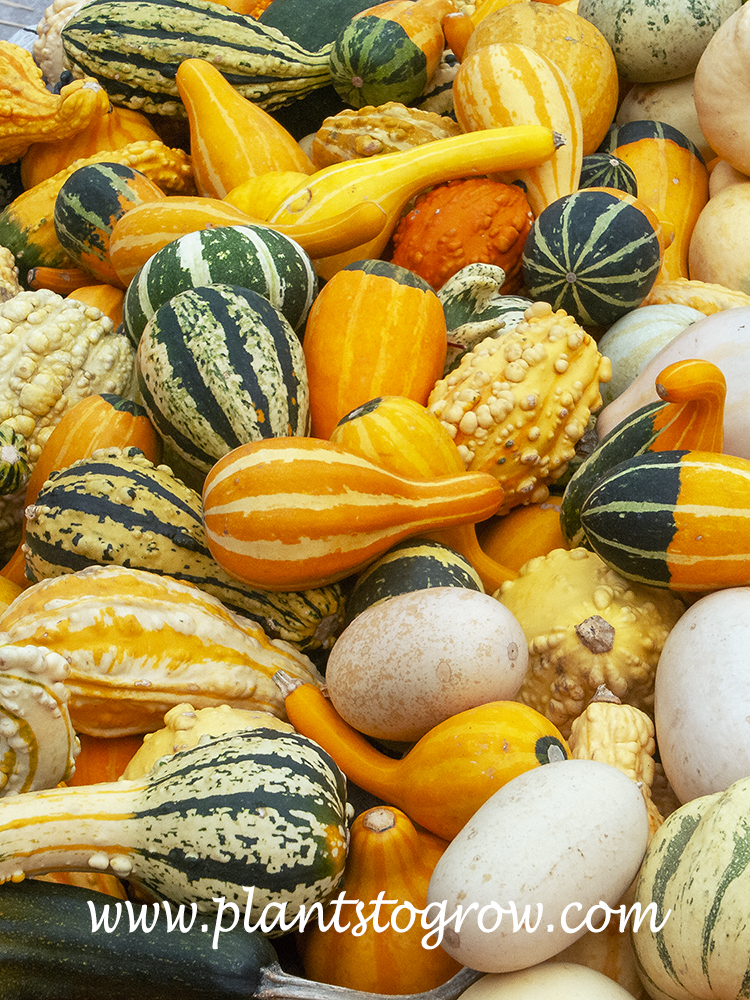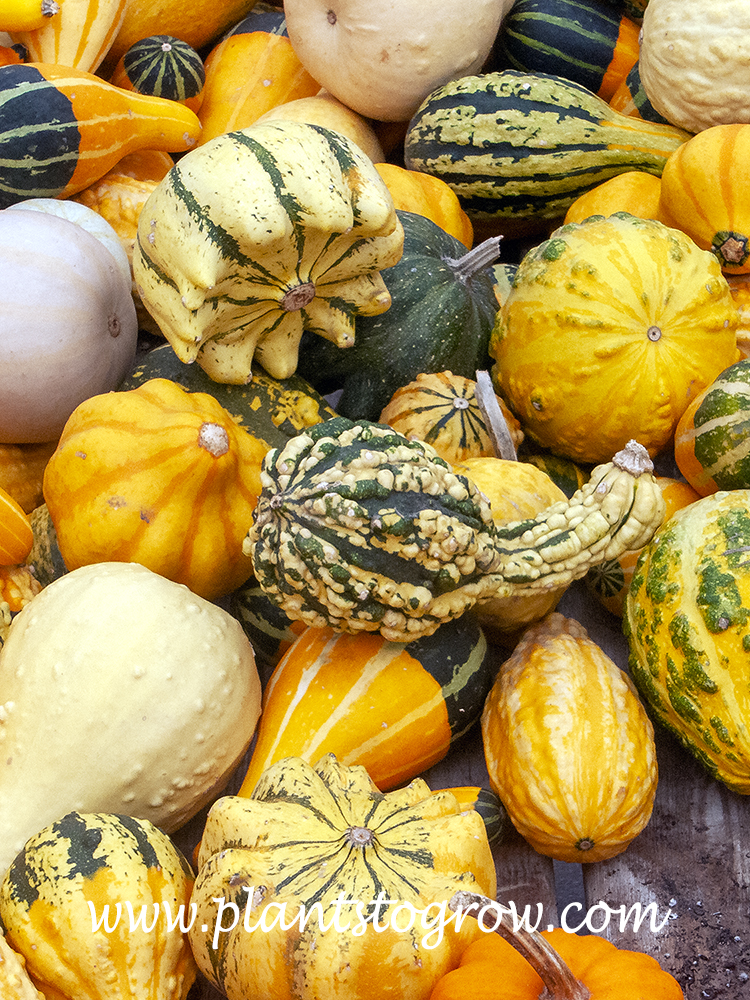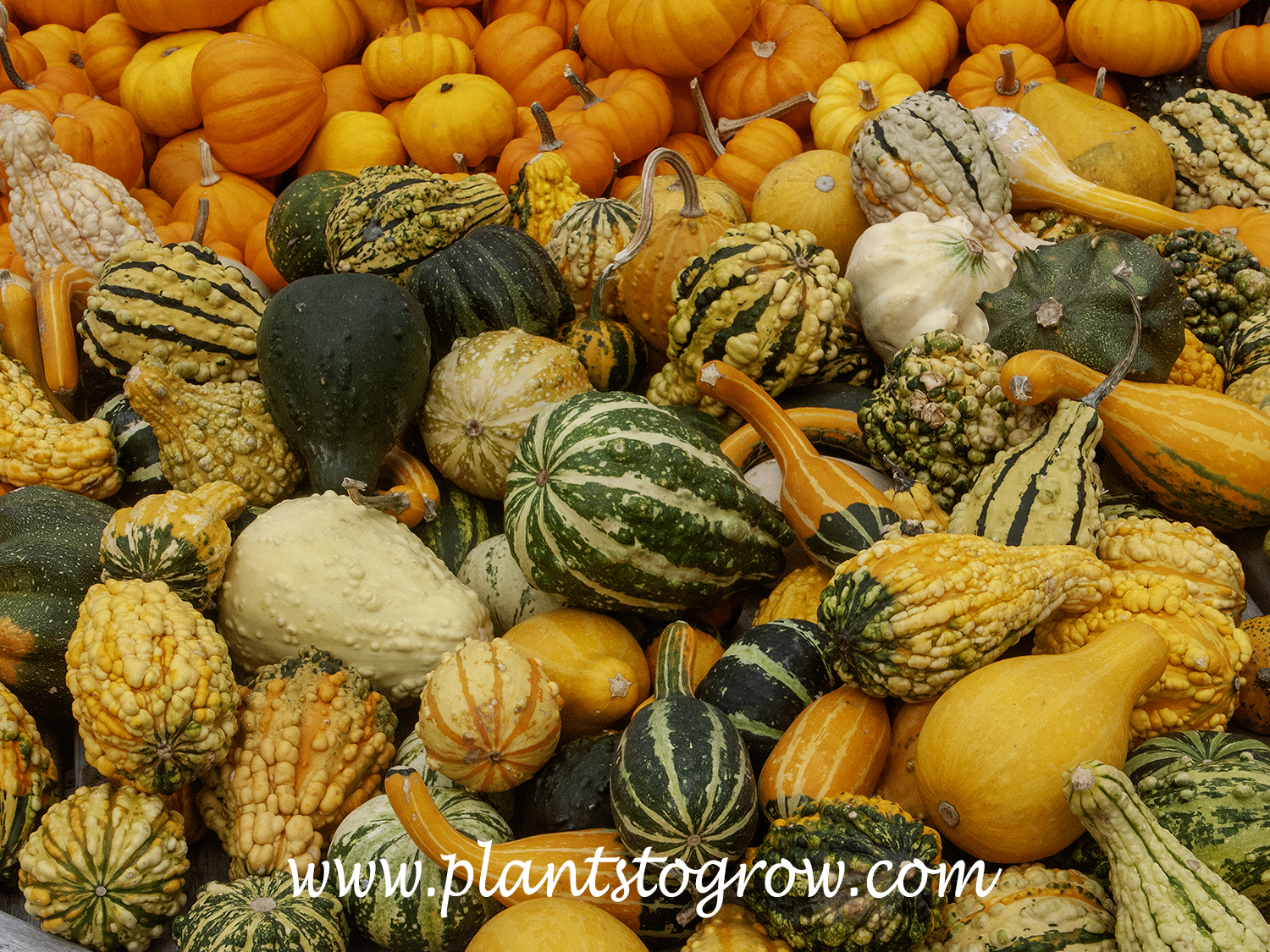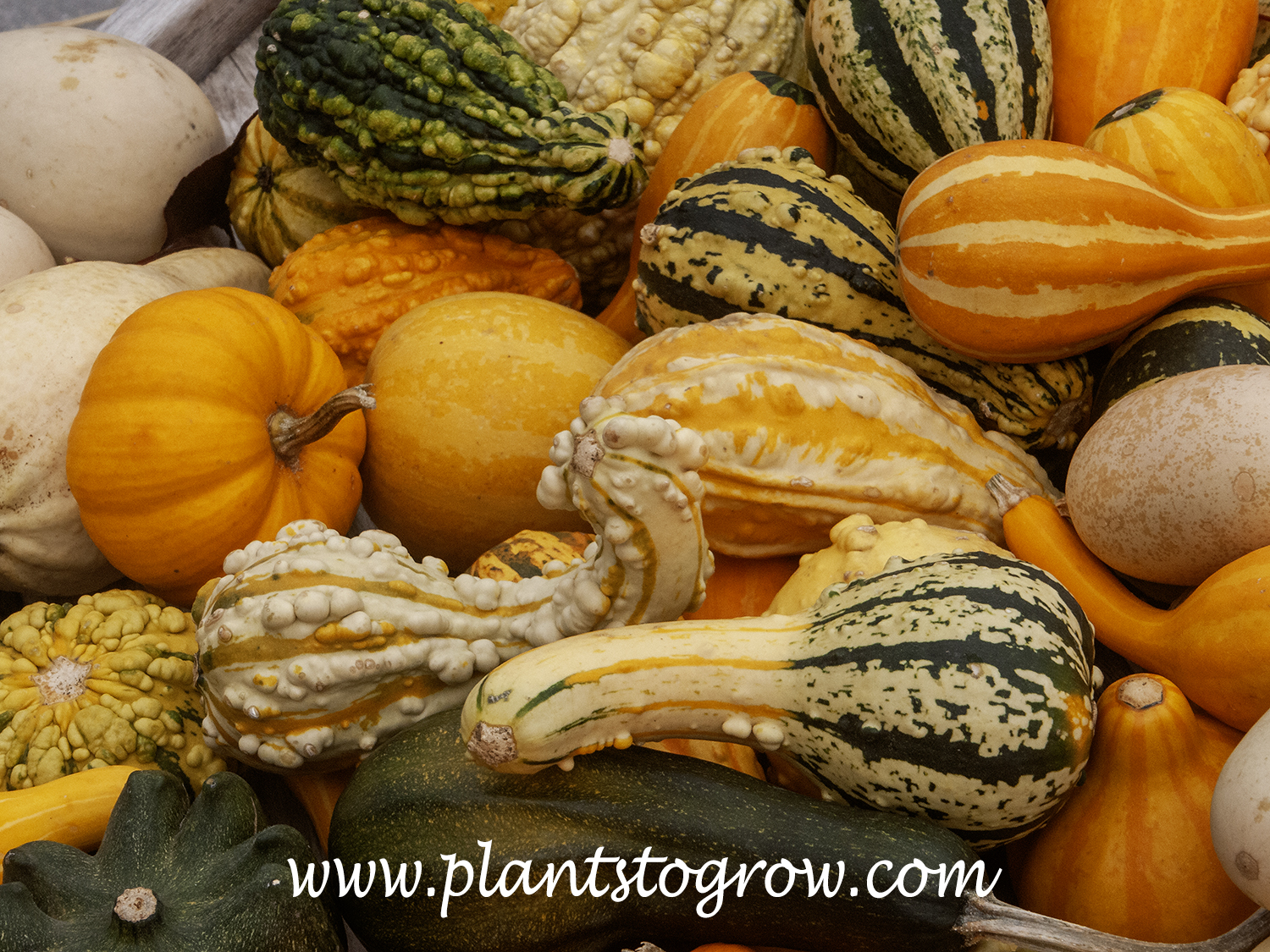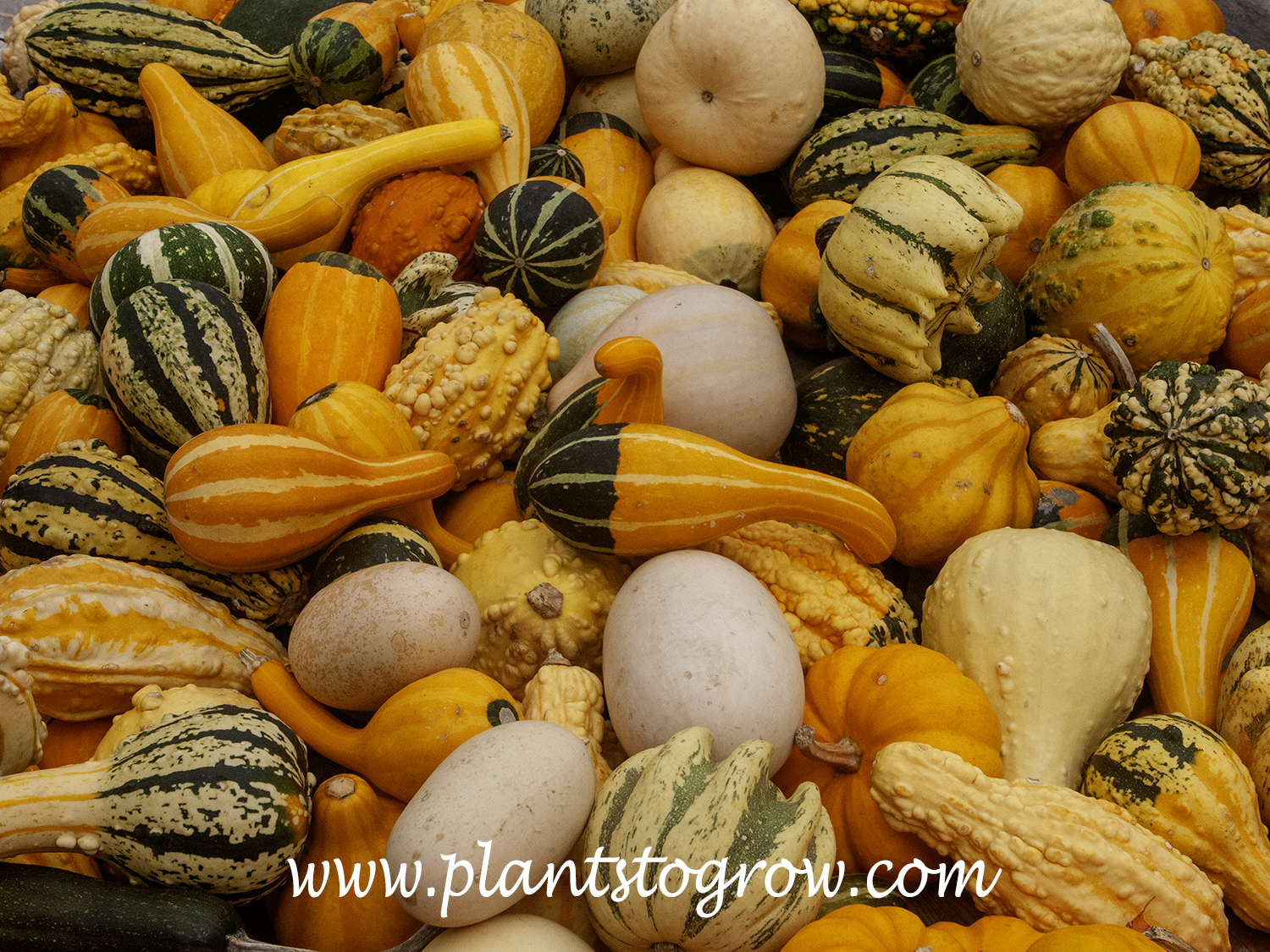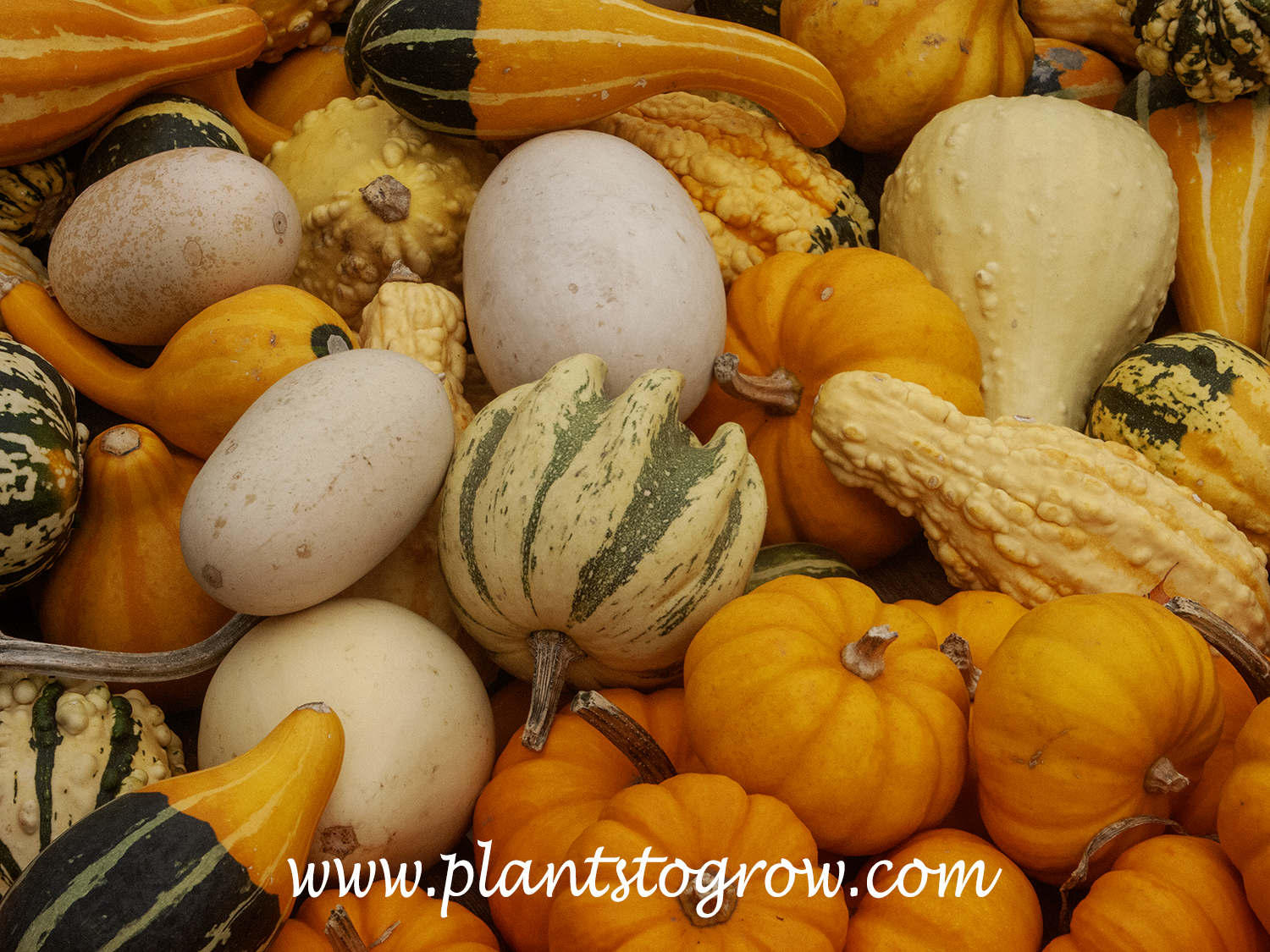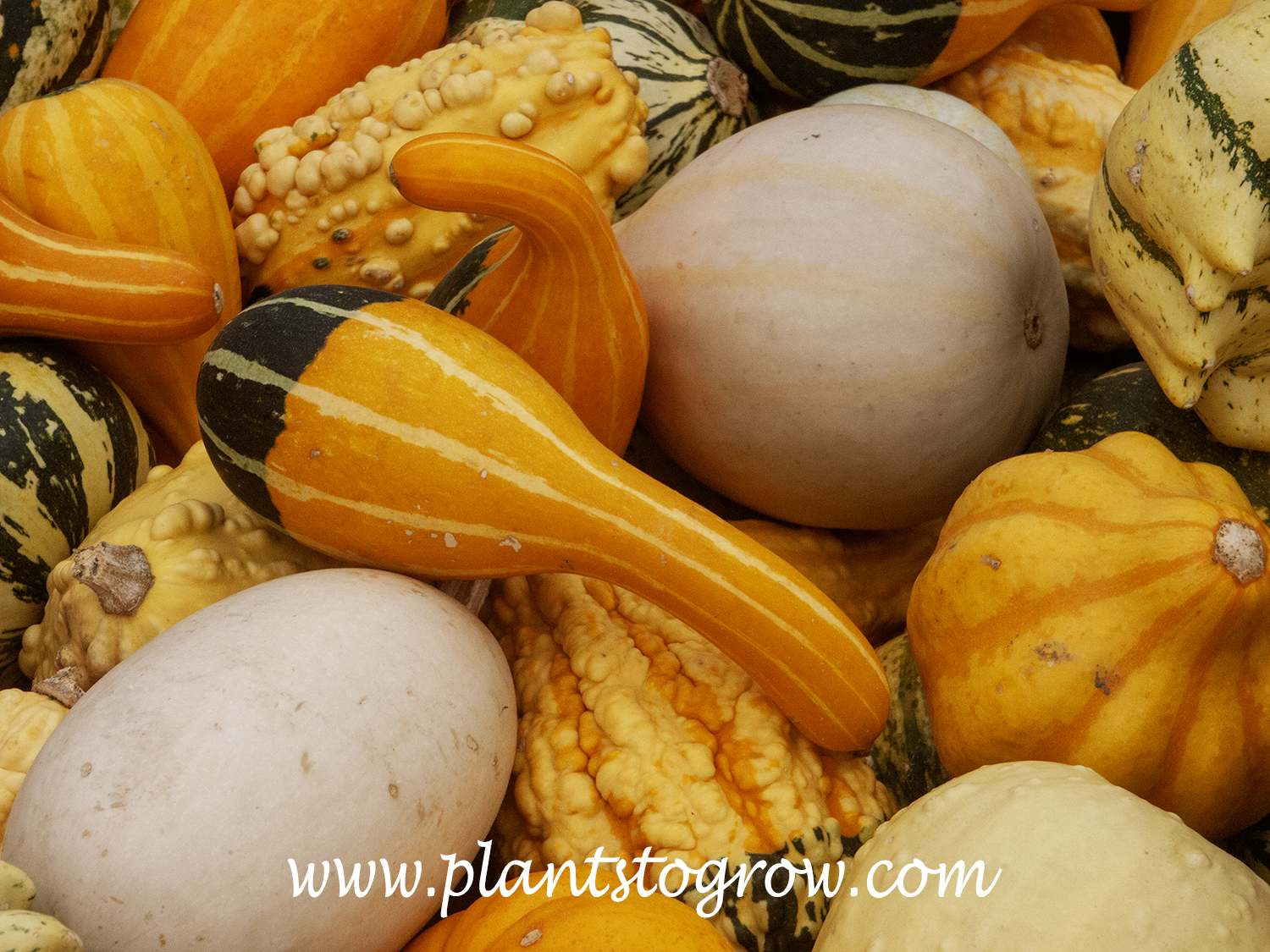| Description | Gourds (Cucurbita) Come in a wide range of colors, shapes, and textures. Easy to grow and makes great displays in the fall. |
|---|---|
| Plant Type | Annuals, Site author's observations, Site author's observations |
| Sunlight | full |
| Moisture | average |
| Soil & Site | average |
| Temperature | avoid planting before the temperatures are warmer, in zone #5 about the end of May, will be killed by the first frost |
| Flowers | Gourds are typically monoecious, meaning they have male and female flowers on the same plant. Most gourd flowers open at night and only last for one night. The pollen of gourds is sticky and requires transfer by an insect. If a flower is pollinated earlier, it will produce larger fruit. If a gourd flower is not pollinated within a day, it will die. To ensure more fruit set, many gardeners opt to hand pollinate. |
| Fruit | botanically referred to as a pepos having a thick, leathery skin, comes in a plethora of colors, shapes, and textures, dries to a hard shell |
| Stems | vine |
| Dimensions | depends on the variety |
| Maintenance | spacing in groups 3-5 feet apart, can be grown tighter, can be grown on a trellis |
| Propagation | easy from seed in situ, I like to start 3-4 in peat pots, then thin to a couple of plants after they are planted |
| Native Site | native to the Andes and Mesoamerica. |
| Misc Facts | It is recommended to let the gourds mature and dry on the vine before harvesting. After harvesting, they should be cleaned by washing or brushing off the dried soil. Then, they should be left to cure in a warm and dry location. The vines can be prickly, so using sturdy scissors or pruning shears to cut the gourd off the vine is best. |
| Author's Notes | Ornamental gourds are closely related to squashes and pumpkins. Usually, they are not consumed because they have hard, dry skin and less flesh than the tastier edible squashes. |

Cart
